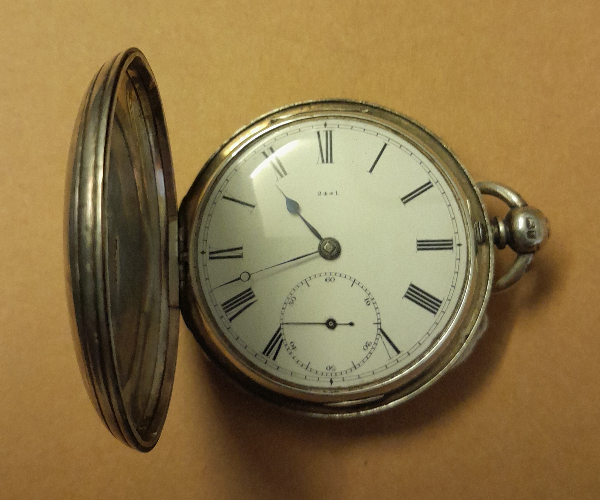
The inscription on this silver pocket watch reads; Presented, with a purse of sovereigns, to Mr. Joseph Shilton, Station master Eckington for his strict attention to the Public convenience at that station April 24th 1862. It was donated to the museum by Mr Shilton’s grandson in the 1980s.
Eckington Station was opened by the Birmingham and Gloucester Railway in 1840. It was part of the ‘railway mania’ that saw a frenzy of investment and speculation of Britain’s railway network in the 1840s after the opening of the first modern railroad, the Liverpool and Manchester Railway, in 1830.
The railway network offered huge opportunities for the people of Britain. Fresh produce could be transported across the country within hours, travel and holidays became accessible to the general population and industry was revolutionised. The introduction of train timetables led to the standardisation of time across Britain in 1840. Before railway time, Victorian train drivers had to constantly adjust to different time zones when they pulled into stations.
Like so many other train stations, Eckington closed to passengers on 4th January 1965 following the Beeching Report published in 1963. The rise of car ownership and the road haulage of goods from the early 1950s was challenging rail’s supremacy. Economist Dr Richard Beeching was brought into British Railways to stem the losses and plan for the future of rail.
The great age of steam was over, but the magnificent Victorian trains still bring joy and a wonderful sense of nostalgia to many.